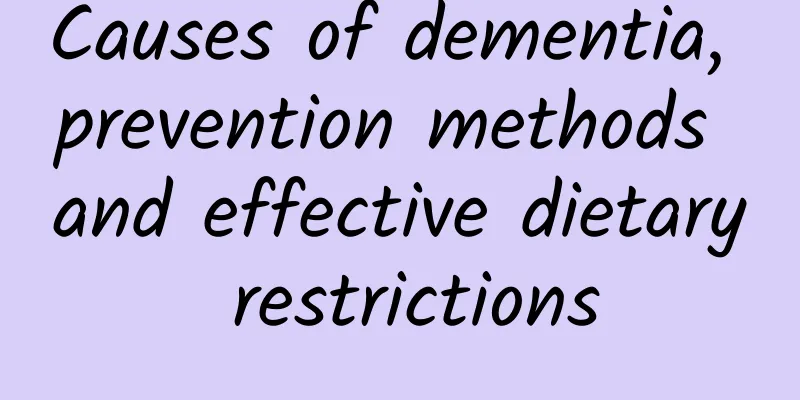Quick Q&A - Shingles (17 useful questions).

|
1. What is shingles? Herpes zoster is a disease caused by the varicella-zoster virus (VZV) and is characterized by a band-like rash along the course of nerves and severe pain. This virus usually manifests clinically as chickenpox or presents as a latent infection after the first infection in immunocompromised people, lurking in the dorsal root neurons of the spinal cord. Once the body's resistance is low, fatigue, infection, cold, fever, anger and other inducing stimuli are applied, the virus can grow and multiply again, causing inflammation or necrosis of the affected ganglia, resulting in neuralgia; and moving along the nerve fibers to the skin, producing segmental blisters on the skin. 2. If there are no blisters, it is not shingles? wrong. Some patients experience pain changes first and then skin lesions; some patients experience skin lesions first and then pain; some, like patients with abortive herpes zoster, always experience local unilateral pain without skin lesions. In the last case, an exclusive diagnosis is required (only after excluding other diseases that cause pain in the affected area can the diagnosis be confirmed based on symptoms). 3. Shingles only appears on the waist? wrong. Herpes zoster usually occurs on one side of the waist or back, but it can occur anywhere on the body, such as the head, face, ears, around the eyes, neck, upper limbs, lower limbs, etc. 4. If it doesn’t hurt, it’s not shingles? uncertain. In most cases of herpes zoster, the main symptom of nerve damage is still pain, but in a few patients with better resistance (such as adolescents and young patients with good resistance), it may only be itchy in the affected area. This makes the initial diagnosis difficult, but a preliminary diagnosis can be made through a comprehensive analysis of medical history, skin lesions, blood routine, etc. 5. If a circle of growth appears all over the body, will it kill you? uncertain. First of all, herpes zoster is arranged in a belt along the ganglion division, occurring on one side of the body, not exceeding the midline. Sometimes, due to the involvement of the small branches of the nerves crossing the opposite side, there are a few skin lesions on the opposite side, but the number of circles is extremely rare. Even if this very small number of patients unfortunately die, it is because their resistance is too poor, the virus replicates too quickly, the scope of involvement is large, and the virus causes, such as "myocarditis", which induces death. 6. If the Chinese medicine thread is burned and cut to the point where it cannot be released, will that be enough? wrong. Herpes zoster is mostly distributed segmentally, which is limited to a certain range. Even if you don't use Chinese medicine thread to "burn" or "duan", it will not "spread". So the operation is redundant. 7. Do you only get shingles once in your life? wrong. Although most patients only have one episode, it is not uncommon for patients with poor immunity to have two episodes, such as elderly people with poor immunity, cancer patients, AIDS patients, diabetes patients, and patients with poor resistance to special diseases. 8. Is shingles not contagious? uncertain. Shingles can be transmitted to infants, young children, or the elderly who have low immunity around them. We have encountered this situation many times in clinical practice: an elderly person taking care of a baby gets shingles, and the child develops chickenpox. 9. Since it will heal itself, just wait for it to get better and don’t worry about it! wrong. The goal of treatment is to prevent postherpetic neuralgia. Because there are still many misunderstandings about this common disease, most patients delay treatment, misdiagnose and mistreat, or use inappropriate medication, which leads to the occurrence of postherpetic neuralgia and they regret it. 10. What are the symptoms of shingles? The typical symptom of shingles is the appearance of clustered blisters in the form of flakes and bands on the skin on one side of the body. It usually only occurs on one side of the body, accompanied by abnormal sensations such as severe pain. Some blisters may fuse into large bullae or blood blisters; erosion, ulceration, and necrosis may occur when the blisters rupture. Atypical cases may only have erythema and papules but no blisters. Some patients may have fever. Paresthesias may be paroxysmal burning sensations, tingling sensations, cutting sensations, deep pain, radiating pain, tearing pain, discharge-like pain, squeezing pain, numbness, itching, and abnormal sensations. 11. What are the special parts of herpes zoster? Trigeminal herpes zoster (ophthalmic branch, maxillary branch, mandibular branch): symptoms include erythema, blisters, keratitis, toothache, etc. Herpes zoster oticus (facial nerve, auditory nerve): If the triad of facial paralysis, ear pain, and herpes in the external auditory canal occurs, it is called Ramsy-Hunt syndrome. 12. How to treat shingles? The principle is to provide active, early, regular and adequate treatment to shorten the course of the disease and prevent secondary infection and postherpetic neuralgia. Specifically, it has the effects of anti-virus, nerve nutrition, symptomatic analgesia, improving immunity, local anti-inflammatory, drying and astringent to prevent and treat infection, and can be combined with red light, helium-neon laser and other therapies. 13. What are the complications of shingles? Among the complications, postherpetic neuralgia is the most common and the most difficult to control. Therefore, the importance of early, active and regular treatment is emphasized. 14. What is postherpetic neuralgia? Postherpetic neuralgia refers to persistent pain in the area after the skin herpes disappears, which generally lasts for 3 to 6 months, and sometimes even for several years or a lifetime. The duration varies greatly, but is positively correlated with age. The incidence of postherpetic neuralgia in patients over 50 years old is more than 30%, while the incidence of postherpetic neuralgia in patients over 60 years old is as high as 50% to 75%. Neuralgia is caused by damaged nerves and the pain is usually very severe. It can take many forms and different patients experience different pain sensations. Patients often use the following words to describe neuropathic pain: burning sensation, tingling sensation, knife-like cutting sensation, deep pain, radiating pain, tearing pain, piercing pain, glass-piercing sensation, discharge-like, squeezing sensation, numbness, itching, crawling sensation, fear of cold, twitching, insensitivity, and abnormal sensation. 15. How to prevent postherpetic neuralgia? Remember these key words to prevent postherpetic neuralgia. 1. Early stage: The sooner you take the medicine after getting shingles, the better, preferably within 3 days and no later than 7 days. 2. Regularity: Strictly follow the intervals between medications and standardize medication use. Use it every 8 hours, not every 4 hours, and certainly not every 12 hours. 3. Adequate dosage: Take dosage based on body weight or evidence from evidence-based medicine, and never cut corners. 4. Foot treatment course: The treatment course is 7-14 days, adjusted according to personal condition and individual differences. 5. Actively nourish the nerves: insist on taking methylcobalamin and vitamin B1 orally to nourish the nerves. 16. Who is prone to postherpetic neuralgia? The elderly (the older they are, the higher the chance), patients who delay early treatment, diabetics, cancer patients, AIDS patients, and those with poor immunity are all high-risk factors for postherpetic neuralgia. 17. How to treat postherpetic neuralgia? 1. Symptomatic analgesic treatment with drugs: 1. Oral medications: analgesics, anti-epileptic drugs, antidepressants; 2. Local medication: Pain-relieving patches can quickly relieve pain with less systemic absorption and fewer systemic side effects. 2. Physical therapy: including ultra-laser, acupuncture, transcutaneous electrical stimulation and other treatments. 3. Interventional treatment: nerve block, nerve damage therapy, radiofrequency damage therapy, nerve regulation, spinal cord nerve stimulation, botulinum toxin intradermal injection, and central target controlled infusion system implantation. 4. Psychological treatment: Patients often feel anxious, depressed and uneasy. Psychological treatment can help overcome this psychological barrier and eliminate the psychological pressure caused by neuropathic pain. I hope that today’s popular science will help everyone to have a correct understanding of shingles in the future. |
<<: Don’t let happiness become an invisible price for your health when drinking during the New Year
>>: Is “eyelid twitching” a disease? Botox treatment is effective!
Recommend
How long does it take for menstruation to come after ovulation?
Recently I encountered a problem: how long after ...
Holding back tears increases the risk of 3 diseases! Tears also have these unexpected benefits
"It's not a sin for men to cry." Wh...
What is the cause of wrist pain when playing tennis? What to do if your wrist hurts when playing tennis
The power of a tennis racket and a ball is much g...
Is it okay for pregnant women to squat when going to the toilet?
Going to the toilet is a very common thing. For p...
Early symptoms of hypothyroidism in women
Thyroid disease troubles many people. Some people...
The difference between loose cervix and open cervix
Loose cervix and dilated cervix are two different...
How to treat the pimples on the inner side of the vulva?
Women are often troubled by gynecological disease...
Introduction to the location of the pelvis
Female friends all know that the pelvis is a high...
Reasons for delayed menstruation for two consecutive months
Under normal circumstances, women's menstruat...
Causes of pain on the right side of the uterus
The most common causes of pain on the right side ...
What are the dietary methods for menopausal syndrome
Menopausal syndrome refers to some functional cha...
Does adnexitis affect pregnancy?
Adnexitis is a very common gynecological disease....
Dietary Guidelines for Lactating Women
For women, it is necessary to supplement nutritio...
Pictures of gynecological diseases and excessive vaginal discharge in women
Female friends are all very familiar with secreti...
Does left ovarian cyst affect women's pregnancy?
The incidence of ovarian cysts is almost on the r...









